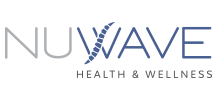Quick description: Professionals & parents in Clermont: learn how chronic stress impacts your spine and nervous system—and how chiropractic plus simple daily resets can improve energy, focus, and tension headaches.
In Clermont, stress shows up in the spine.
Busy workdays, US-27 commutes, homework, marathons, and late-night screens keep your body in “go mode.” Over time, that stress pattern tightens neck and shoulder muscles, pulls your head forward, shortens your breathing, and ramps up tension headaches and fatigue.
The good news: once you understand the stress → spine → symptoms chain, you can break it—with simple habits and targeted chiropractic care.
How stress loads your spine (in plain English)
When your nervous system runs hot (emails, deadlines, kid logistics), your body shifts into fight-or-flight:
- Muscle guarding: Neck/shoulder and low-back muscles brace—great for emergencies, not for 8 hours at a desk.
- Forward head posture: Screens + stress pull the chin forward, compressing upper cervical joints (hello, behind-the-eyes headaches).
- Shallow, chesty breathing: Ribs move less, mid-back stiffens, jaw clenches. Less oxygen in → lower energy out.
- Caffeine/sleep swings: Late coffee + short sleep keep the loop going. (Let’s not get into the affects of coffee on the body in general! That’s another talk for another day!)
Translation: Stress doesn’t just live in your head—it lives in your posture, joints, and breath.
Stress signals we see in clinic
- Tension headaches starting at the base of the skull or behind the eyes
- Neck/shoulder knots that “won’t release”
- Jaw clenching, ear fullness, or morning temple pressure
- Mid-back tightness, shallow breathing, rib stiffness
- Low-back flare-ups after long sits or commutes
- Brain fog and afternoon energy crashes
If that sounds familiar, you’re not alone—this is the Clermont professional + parent pattern.
How chiropractic helps your body adapt better
A good plan calms the system and restores efficient movement:
- Precise assessment – neck, mid-back, ribs, jaw, and breathing mechanics.
- Gentle, targeted adjustments – to improve joint motion and reduce muscle guarding.
- Rib & thoracic mobility – unlocks 360° breathing (more oxygen, less tension).
- Posture & workstation tuning – realistic upgrades for desk, car, and phone time.
- Nervous-system downshift tools – simple breath work and micro-breaks you’ll actually use.
Most people report easier movement, fewer tension headaches, better focus/energy, and a calmer baseline—hallmarks of natural stress management in Clermont without adding another complicated routine.
The 5-Minute “Stress → Spine” Reset (anywhere, no equipment)
Do this once in the morning, once mid-afternoon (and anytime a headache starts to whisper).
- 4-6 Breathing × 6 cycles
Inhale through your nose for 4, exhale for 6. Jaw unclenched, tongue on the roof of the mouth. - Chin Tucks × 10 (2-second holds)
Slide the chin straight back (not down). Feels like giving yourself a double chin—totally fine. - Shoulder-Blade Squeezes × 10 (2-second holds)
Elbows by your sides; squeeze gently—no shrugging. - Doorway Pec Stretch × 2 × 20–30s
Forearms on the frame, step through lightly. Keep ribs soft. - 360° Rib Breath × 5
Hands around lower ribs; feel expansion forward/sides/back on inhale; slow, quiet exhale.
Result: softer neck/shoulders, better oxygenation, calmer nerves—often enough to stop a tension headache from building.
Micro-habits for professionals & parents (stack these on your day)
- Commute cue (US-27 lights): 3 slow nasal breaths + 3 chin tucks at the longest light.
- Meeting rule: Stand for the first 60 seconds of every hour.
- Phone posture: Eye-level scroll (lift the phone), elbows supported.
- Screen rhythm: 20-20-20 for eyes; stand/move 1–2 minutes every 30–45 minutes.
- Evening off-ramp: Dim screens 60 minutes before bed; 6 slow breaths; brief stretch.
- Caffeine cut-off: Last dose 6–8 hours before planned sleep. (Also, sub with more holistic coffee options)
A 7-Day “Calm Spine” Sprint
Day 1 – Baseline: Rate stress (0–10), energy (0–10), headache frequency. Do the 5-Minute Reset once.
Day 2 – Desk tune-up: Screen at eye level; lumbar roll at belt line. Two resets.
Day 3 – Drive tune-up: Slight seat recline (100–110°), towel roll at low back. Two resets.
Day 4 – Breathing: 5 sets of 4-6 breathing spread through the day. One reset.
Day 5 – Move: 10-minute brisk walk (South Lake Trail or neighborhood), crown tall, ribs soft. One reset.
Day 6 – Jaw calm: Chew less gum; evening jaw massage + 6 slow breaths. Two resets.
Day 7 – Review: Re-rate stress/energy/headaches; keep the 2–3 wins that moved the needle.
FAQ (quick + honest)
Will chiropractic fix my stress?
It won’t remove life’s stressors, but it can reduce how stress loads your joints, muscles, and breath, helping your nervous system adapt better.
Is this just “posture”?
Posture is one lever. Joint motion, rib mobility, and breathing mechanics make the big difference day-to-day.
How fast will I feel changes?
Many feel less tension in neck/shoulders and clearer head within the first few visits plus daily resets. Patterns improve over 2–6 weeks with consistency. Note, everyone responds differently and there are multiple factors that usually affect the body’s ability to respond.
When to be seen (and when to seek urgent care)
Book an evaluation if tension headaches, neck/shoulder pain, or mid-back tightness last >2 weeks, or if you notice numbness/tingling into an arm.
Urgent care for red flags: sudden severe “thunderclap” headache, neurological changes (weakness, slurred speech, vision loss), head injury, fever + stiff neck.
Ready for natural stress management—NuWave style?
Bring photos of your desk and car setup. We’ll map a simple plan that pairs targeted chiropractic care with breath, posture, and micro-habits—your blueprint for a calmer nervous system and real stress relief.
New here or Curious to find out more about your health? Complete the “Is Pain Costing You More Than You Think?” Scorecard today!
New Here? Visit nuwavehealthandwellness.com to schedule.
Educational content only; not a diagnosis or treatment. Always consult a licensed provider for your specific situation.

